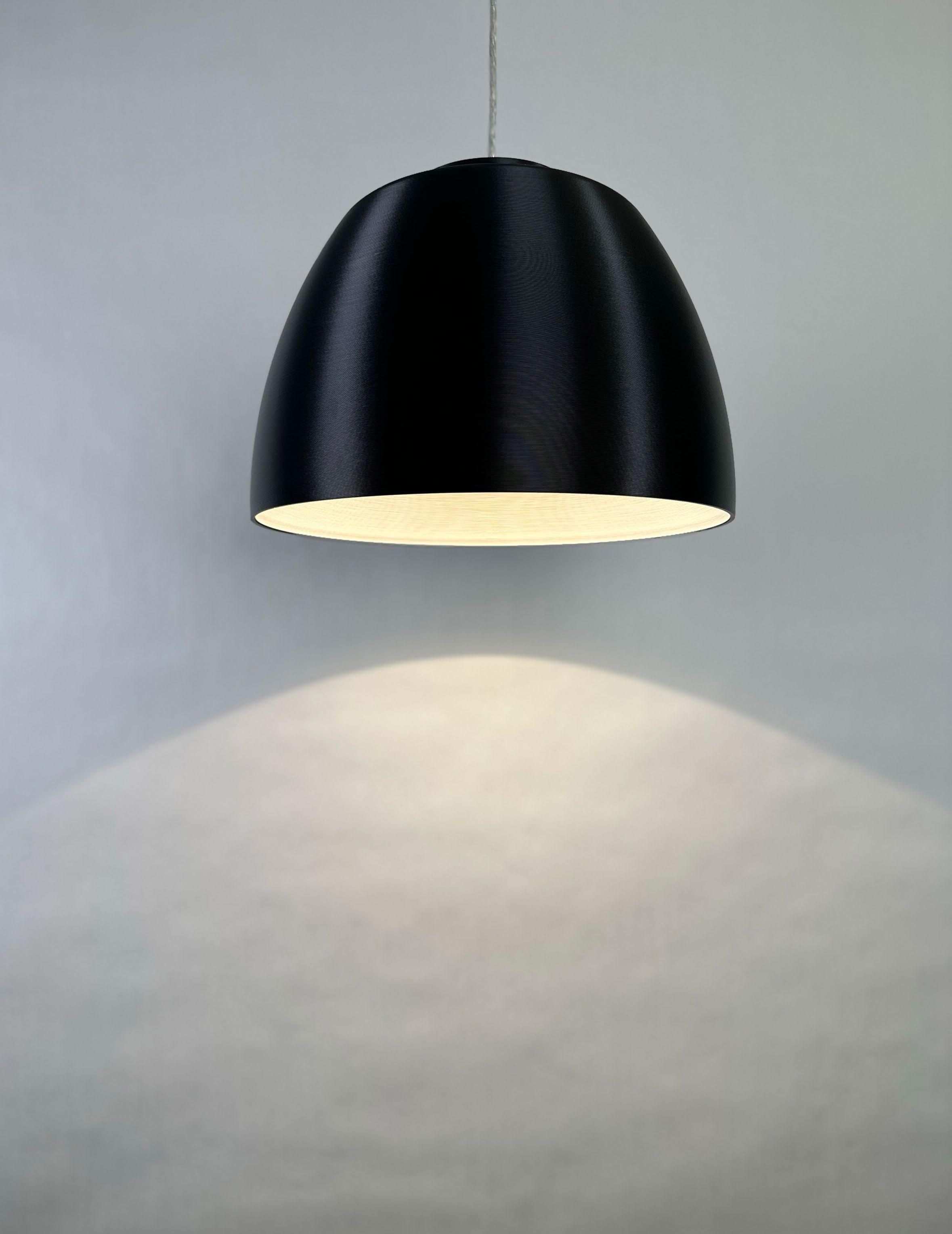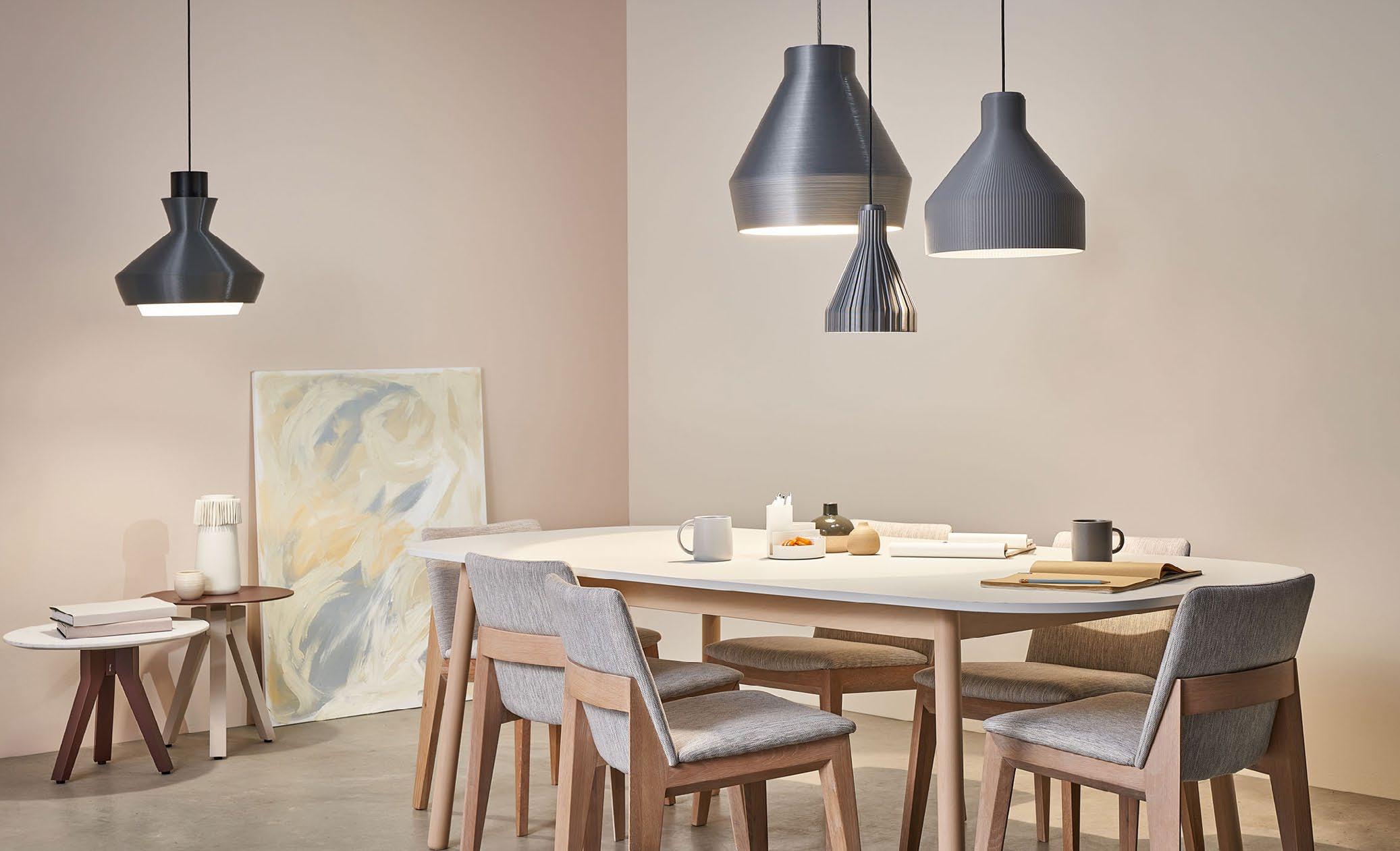
6 minute read
Printed Precision
AutoStore's Leap into 3D-Printed Lighting
By Randy Reid
For an extensive period, we've been on the search for a significant 3D-printed lighting project designed by a lighting designer, yet such a project has remained elusive. Unwilling to postpone any further, we opted to showcase the AutoStore project, hoping to inspire the creative community of lighting designers to explore and embrace the unique benefits of 3D printing technology.
AutoStore, a leader in robotic storage solutions, faced a unique challenge in finding a lighting solution that matched the sophistication of their automated warehousing systems. Standard off-the-shelf options were insufficient for their cutting-edge facility nestled within the Tuscan Village of Salem, New Hampshire.
AutoStore's vision was specific: a light fixture that not only performed efficiently but also mirrored the hightech environment of their headquarters and met their construction deadline. This led to a partnership with Cooper Lighting Solutions and PrentaLux, their brand of on-demand, 3D-printed lighting fixtures.
Enter Larry Fallon, Business Development Manager at PrentaLux, and his team from Cooper, whose reputation for flexibility and rapid prototyping precedes them. Fallon recounts how a connection through Sara Grossman, an agent from Reflex Lighting Group in Boston, initiated the personalized lighting project. "AutoStore and their architect had a specific look in mind, one that wasn't readily available or within the desired budget," Fallon explained. "They needed a design that didn't exist yet, and that’s where our expertise came into play."
Traditionally, tailor-made lighting could entail lengthy design cycles, tooling and production times, along with a significant expense. PrentaLux, however, upended these norms. "Our PRLX-205 Series had the bones of what AutoStore was looking for, but it needed to fit their unique space and operational requirements," Fallon noted.
The team’s flexibility allowed PrentaLux to transform AutoStore's concept into a reality in a remarkable 10 days.
“By adjusting the design, we could preserve the integrity of the light engine while tailoring the fixture to their precise needs,” Fallon continued, emphasizing the transformative power of 3D printing in lighting design.
The solution lay in adapting an existing product to meet the specific needs of the project. "We started with our PRLX-205 engine from our PRLX-200 luminaire series," Fallon said. "It was close to what AutoStore envisioned, but the luminaire required some significant modifications – it needed to be 'squished', shorter in height, more rounded and with a wider diameter.

SUSTAINABLE SOLUTIONS: THE ECO-CONSCIOUS APPROACH
The materials chosen for these fixtures symbolize a commitment to sustainability. PrentaLux products are crafted from bio-circular polycarbonate derived from wood processing byproducts—a meaningful move away from petroleum-based plastics. Neil Hardwick, Product Manager for PrentaLux, emphasized this strategic choice: "We're proud to use a material that is at least 55% recycled or bio-circular - that's a testament to our commitment to eco-friendly practices."
The strength of Fallon's approach lay in the power of 3D printing technology, which allows for such exacting personalization.
With multiple test printers at their disposal in Boston and Denver, Fallon's team was able to reimagine the PRLX-205 fixture to meet AutoStore’s requirements. "We presented this challenge to our designers, and with remarkable speed, they reshaped the PRLX-200, maintaining its performance while meeting the design criteria AutoStore was looking for," he noted with pride.
This rapid innovation cycle, from the initial design to a ready-to-ship product, is a testament to the transformative capabilities of 3D printing.
"The process began on December 8th, and by January 4th we had a purchase order. Because our designs are software based, there is no tooling up of new designs. In fact, by February 27th, we’ll have shipped 219 tailored fixtures," Fallon highlighted. This project not only demonstrates the team's agility but also underscores the potential for 3D printing to revolutionize how custom lighting solutions are conceived and delivered. Each PrentaLux luminaire is printed in approximately 2 hours.
Neil Hardwick reflected on the innovative process: "The beauty of our method is its responsiveness to customer needs. If AutoStore needs a change or if a fixture gets damaged, we can print a replacement on-demand. Our designs are stored as digital files, making them immortal in a sense—there's no physical tooling that will wear out or become obsolete."

The fixtures created for AutoStore met rigorous lighting requirements, providing 3500K at 90 CRI, crucial for their operation. Beyond performance, PrentaLux fixtures offered extensive personalization in shape, size, color and texture, enabling seamless integration into AutoStore's distinctive environment. "The ability to choose from various colors, textures, and shapes allowed for a lighting solution that truly complements AutoStore's innovative spirit," Fallon noted.
In the design process, every aspect was scrutinized, ensuring each fixture not only performed its intended job but also contributed to the broader aesthetic and environmental goals. “We looked at every angle, from how the light interacts with AutoStore’s space to how the fixtures would be recycled at the end of their life,” Fallon remarked. “We're moving away from a cradleto-grave mindset to a more circular, cradle-to-cradle approach. We're not there yet, but cradle-to-cradle is the goal for all our 3DP fixtures.”
AutoStore's quest for the perfect lighting fixture became a journey of innovation and environmental stewardship. "What we've accomplished for AutoStore is a beacon of what can be achieved when you merge technology and manufacturing ability with ingenuity, " Fallon stated. With PrentaLux technology, the lighting industry is on the cusp of a revolution, moving towards on-demand, local manufacturing that promises responsiveness, waste reduction, and an adherence to the principles of sustainability.
The project's success led to an expanded collaboration when Tuscan Village commission an additional 125 fixtures for their headquarters. “This order is a validation of our work and a signal that we're on the right path,” said Fallon.
The implications of this partnership extend beyond the immediate project. Hardwick pointed out, “The industry is evolving. We're exploring the idea of printer farms that could be brought directly to job sites, cutting down on shipping costs and environmental impact.” These innovations offer a glimpse into a future where lighting fixtures are produced on-demand, tailored to each client’s specifications, and aligned with the overarching principles of sustainability and efficiency. ■










